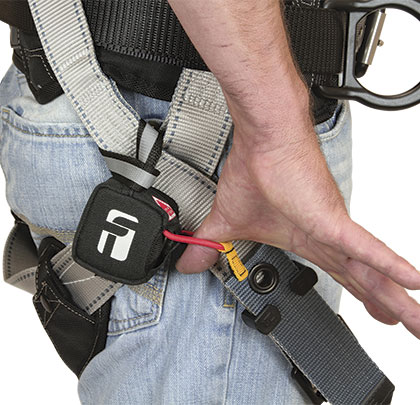Often, safety managers believe that their job is complete if they can keep their workers from contacting a lower level during a fall event at work. Unfortunately, post-fall suspension trauma and timely rescue are often ignored when employers are building a fall protection plan.
While waiting for rescue, suspension trauma is a real threat. Suspension trauma can be caused by any situation where a worker is forced to stay upright without the ability to use his legs or move, such as in a personal fall arrest system during a fall event. Even under the most ideal circumstances, when a rescue plan is in place, suspension trauma should always be treated as an emergency situation because it can become fatal in a very short amount of time.
WHAT IS SUSPENSION TRAUMA?
During a fall event, several things occur that can lead to suspension trauma. Because the worker is suspended in an upright posture with legs hanging, blood begins to pool in the legs. The safety harness straps exert pressure on leg veins, compressing them and reducing blood flow back to the heart. If circulation is impeded enough, the heart rate will abruptly slow, reducing oxygen to the brain. Under normal circumstances, fainting and collapsing to the ground would occur, positioning the head, heart, and legs at the same level, thus returning blood flow and oxygen to vital organs. Unfortunately, during a fall event, the harness keeps the worker upright. The worker faints but cannot collapse, and circulation isn’t restored.
TAKING STEPS TO REDUCE THE POTENTIAL FOR SUSPENSION TRAUMA
The simple act of standing can save a life.
One of the ways to slow the progression of suspension trauma is to stand up. Under normal circumstances, when a worker is standing, the leg muscles must contract to provide support and maintain balance, which puts pressure on the veins. This pressure, along with a series of one-way valves in the veins, helps blood get to the heart and reduces the amount of blood pooling in the legs.
HOW DOES A WORKER STAND WHILE HANGING IN A HARNESS?
By employing suspension trauma relief straps.
Suspension trauma relief straps typically come packaged in two pouches that attach to each side of a harness. During a fall event, the worker can deploy the trauma relief straps—creating a loop that the worker can put his feet into and press against to simulate standing up. This allows the legs muscles to contract, and can relieve pressure from the leg straps, immediately improving circulation.
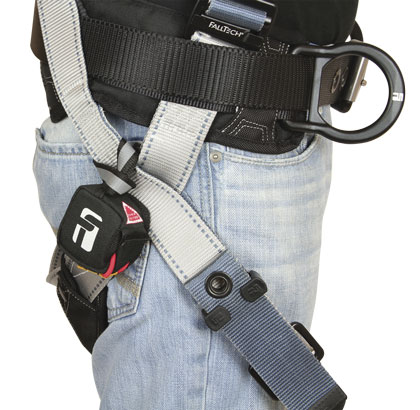
Attach hip-packs to left and right sides of the harness as shown.
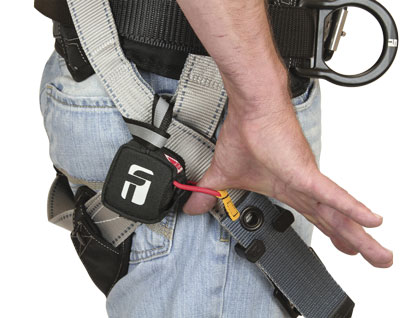
In the event of a fall, simply insert thumbs through rod deployment loops.
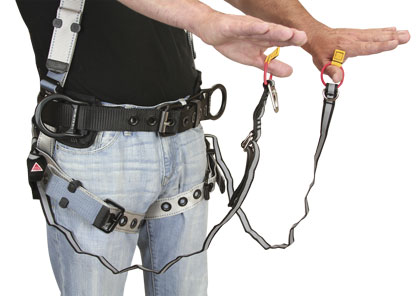
Pull red loops forward to release back closure and deploy the full length of the reflective straps.
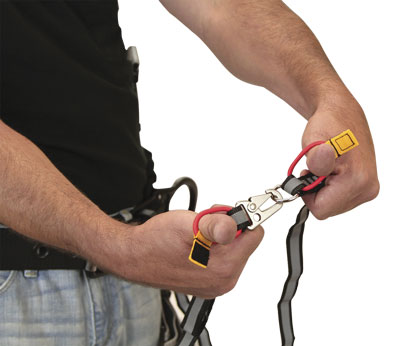
With thumbs still holding loops, securely connect steel strap-end clips to form a continuous sling.
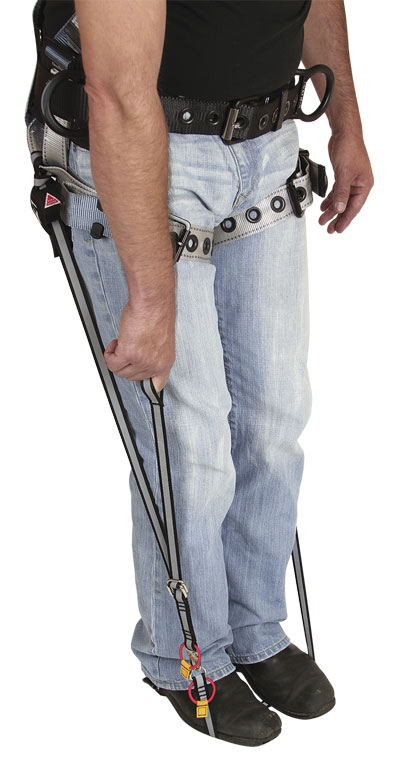
Now place both feet in the sling and pull up on trailing end of strap to adjust to your height. Step-in sling is infinitely adjustable to relieve sub-pelvic pressure.
PREPAREDNESS IS KEY
Too often, a worker is saved by his personal fall arrest system, only to succumb to suspension trauma while waiting for rescue. Not only should everyone who works at height be fully trained in fall prevention and protection, they should also include provisions for rescue in the event a fall does occur. Taking a few minutes to familiarize yourself, adjust, and practice with suspension trauma relief straps could mean the difference between life and death. ■
For More Information: For more information on fall protection, call FallTech at 800.719.4619, or visit www.falltech.com.
_________________________________________________________________________
Modern Contractor Solutions – March 2016
Did you enjoy this article?
Subscribe to the FREE Digital Edition of Modern Contractor Solutions magazine.

After the Fall Event
